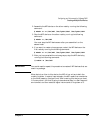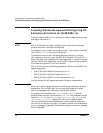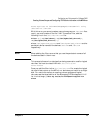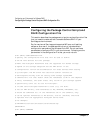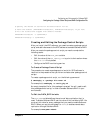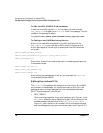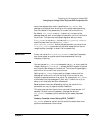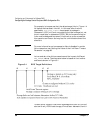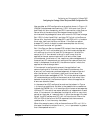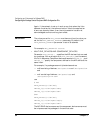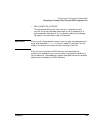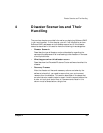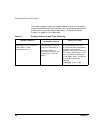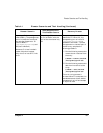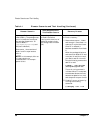
Configuring your Environment for Software RAID
Configuring the Package Control Script and RAID Configuration File
Chapter 3 81
Now consider an XDC configuration such as that shown in Figure 1-3
(DWDM links between data centers). If DC1 fails such that links A
and B both fail simultaneously, and DC1's connection to the Quorum
Server fails at the same time, Serviceguard ensures that DC2
survives and the package fails over and runs with DC2 local storage.
But if DC1's links A and B fail, and later DC1's link to the Quorum
Server fails, then both sets of nodes (DC1 and DC2) will try to obtain
the cluster lock from the Quorum Server. If the Quorum server
chooses DC1 (which is about to experience complete site failure),
then the entire cluster will go down.
But if the Quorum Server chooses DC2 instead, then the application
running on DC1 will not be able to write to the remote storage but
will continue to write to its local (DC1) storage until site failure
occurs (at t3). If the network is set up in such a way that the
application cannot communicate with its clients under these
circumstances, the clients will not receive any acknowledgement of
these writes. HP recommends you configure the network such that
when links between the sites fail, the communication links to the
application clients also go down.
If the network is configured to prevent the application from
communicating with its clients under these circumstances, the
clients will not receive any acknowledgement of these writes and
after the failover will re-transmit them, and the writes will be
committed and acknowledged at DC2. This is the desired outcome;
HP recommends you configure the network such that when links
between the sites fail, the communication links to the application
clients are also shut down.
In the case of an XDC configuration such as that shown in Figure
1-4, there is an additional variable in the possible failure scenarios.
Instead of a DWDM link, in this configuration there are two separate
LAN and FC links which can experience failure independent of each
other. If the network links between the sites fail within a very short
period (on the order of 1 second) after t1 (after the storage links had
failed), the XDC software on DC1 will not have time to inform the
XDC on DC2 of the failure. So DC2 assumes that there were no
updates after t1, but there may have been.
When this scenario occurs, disk writes continue on DC1 until t3. In
this case, the effective value of the RPO_TARGET parameter is greater
than the expected value of 0.



